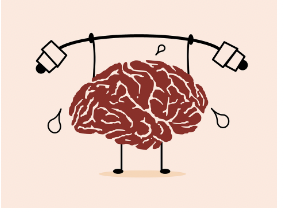Year round sports’ impact on mental health

Photo courtesy of pixabay
High school is known to be an all around stressful experience. Despite the huge workloads assigned in classrooms, many students choose to go above and beyond by participating in extracurriculars. These can range from lunch time clubs to after school commitments such as sports. Out of these students, there are a select few who do sports, despite the large time commitment. From practices everyday after school — even during breaks — to weekly games, sports require students to devote a substantial amount of their time throughout their respective seasons.
As students progress through high school, workloads only increase and many students accumulate hours of daily work as a result. Due to the amount of work many end up having, they end up sacrificing their mental health, grades or social life to maintain the other two. FHS senior Rakhi Chadalavada was a year round athlete who was on the cross country, basketball, and track team. Chadavada maintains that,in order to do sports and be a successful high schooler, she ends up putting off any entertainment and recreational activities for later. Chadalavada also mentions other drawbacks of playing sports all year.
“I don’t have as much time to spend with my friends during the week and so that’s kind of hard,” Chadalavada said. “But also at the same time, I have other friends [in sports] so it’s not like I’m missing that much.”
When looking back at how many sacrifice sleep to do well in school and their extracurriculars, some may believe that taking on such large time commitments may not be the best decision. According to Stanford Children’s Health, 70% of high schoolers do not get enough sleep. This is likely due to activities such as homework and extracurriculars taking up their time. This can limit students’ ability to focus and learn while also increasing the risk of health issues such as obesity and poor mental health. While doing a sport is helpful for one’s physical health, the mental toll it can take, coupled with high school academics is mostly negative. In another survey conducted by the CDC in 2019, about 2.7 million children were diagnosed with depression and 5.8 million with anxiety. While this is shocking, it is important to take into account that the true number is most likely higher due to the fact that a large percent of the world’s population who suffer from mental health issues do not get diagnosed.
For the students that choose to take on these commitments, it is crucial that they develop time management skills. High school athletes dedicate hours to practices and games throughout the week, including time from their sixth and seventh period classes to travel to other schools for games. When asked how she manages her time in order to maintain her physical and mental health, Chadalavada gave a few tips.
“Honestly, just making a list helps me a lot and just getting done with [work] as soon as possible [and] not procrastinating,” Chadalavada said. “I’ve just learned that usually as soon as I get home from school, I finish all the homework that I have so that after that I have time to do sports.”
Despite the clear challenges of taking on large commitments outside of academics, it is an admirable feat that year round athletes take on.








